Gold prices edge higher with focus on Ukraine-Russia, Jackson Hole
Introduction & Market Context
Capstone Green Energy Corporation (NASDAQ:CGRN), a provider of customized microgrid solutions and on-site energy technology systems, presented its first quarter fiscal year 2026 results on August 15, 2025, showcasing substantial growth across key financial metrics and highlighting its strategic acquisition of Cal Microturbine, a West Coast distributor.
The company’s performance comes amid increasing demand for distributed energy solutions and microgrid technology, as businesses and municipalities seek more resilient and environmentally friendly power options. Capstone’s focus on "Smarter Energy for a Cleaner Future" positions it to capitalize on the growing interest in sustainable energy solutions across multiple sectors.
Quarterly Performance Highlights
Capstone reported impressive year-over-year growth in its first fiscal quarter ended June 30, 2025. Revenue reached $12.228 million, representing a 78% increase compared to the same period last year. This growth was driven by a 190% surge in product revenue and a 77% increase in Energy-as-a-Service (EaaS) revenue.
As shown in the following quarterly performance dashboard, the company achieved its fifth consecutive quarter of positive adjusted EBITDA, reaching $2.0 million – a substantial 268% increase year-over-year:

The company’s bookings also demonstrated significant momentum, with Q1 FY26 bookings totaling $17.0 million for 23 units, compared to just $3.6 million for 22 units in Q1 FY25. This represents a 372% increase in booking value. Through June 30, 2025, Capstone had booked orders for 41 megawatts of microturbine capacity, with 126 units ordered and 31 megawatts shipped.
The global reach of Capstone’s operations now spans 19 countries across four continents, as illustrated in the company’s bookings update:
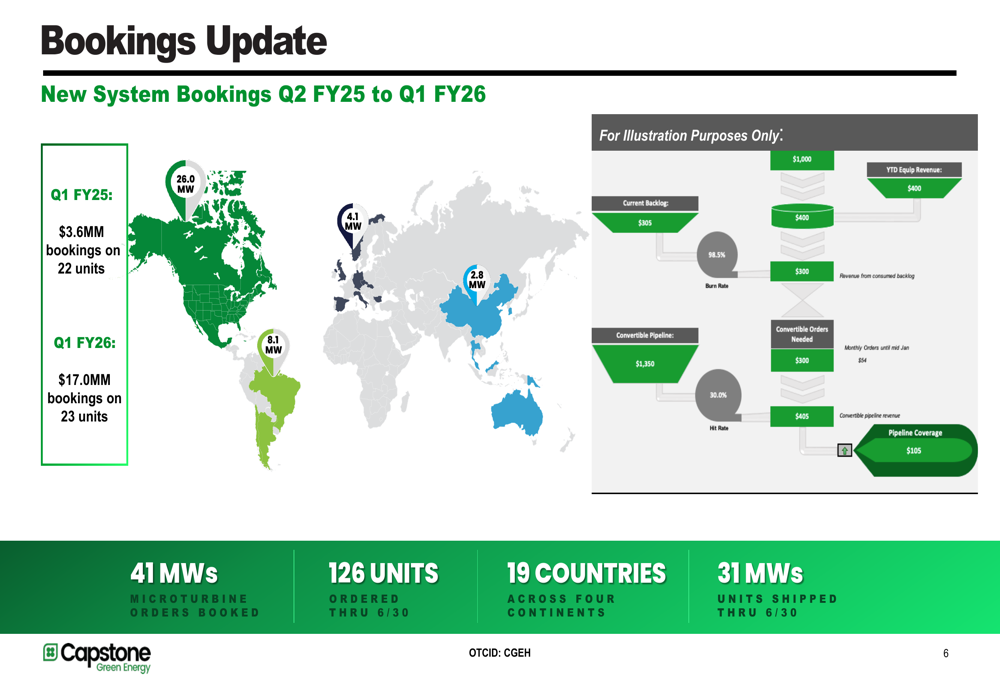
Strategic Initiatives
A key highlight of Capstone’s presentation was the acquisition of Cal Microturbine, a West Coast distributor. This strategic move expands Capstone’s presence in what the company describes as "one of the richest territories for distributed generation growth," characterized by high spark spreads (the difference between electricity prices and the cost of natural gas used to generate it).
The Cal Microturbine territory offers access to diverse vertical markets including oil and gas, manufacturing, waste water treatment plants, landfill gas, mission-critical facilities, hospitality, and educational institutions:
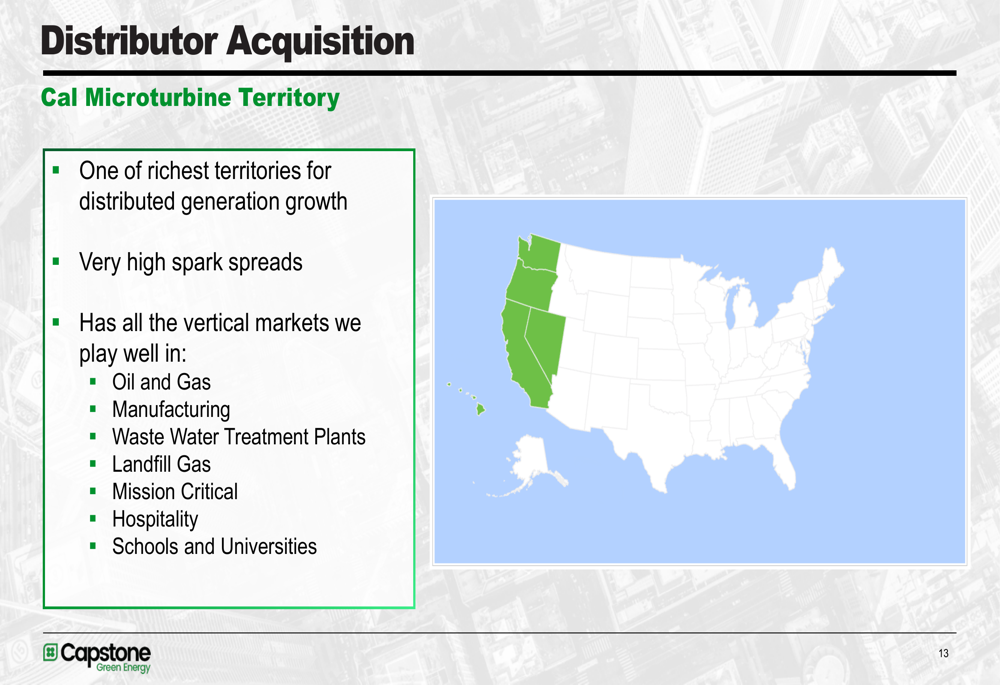
Capstone also emphasized its ongoing Design for Manufacture and Assembly (DFMA) initiatives, which are yielding significant cost savings. A case study presented on a battery enclosure redesign demonstrated how the company achieved a 61% cost reduction by shifting from a U.S. supplier ($900) to an international supplier ($350), while accounting for material, labor, duties, and logistics:
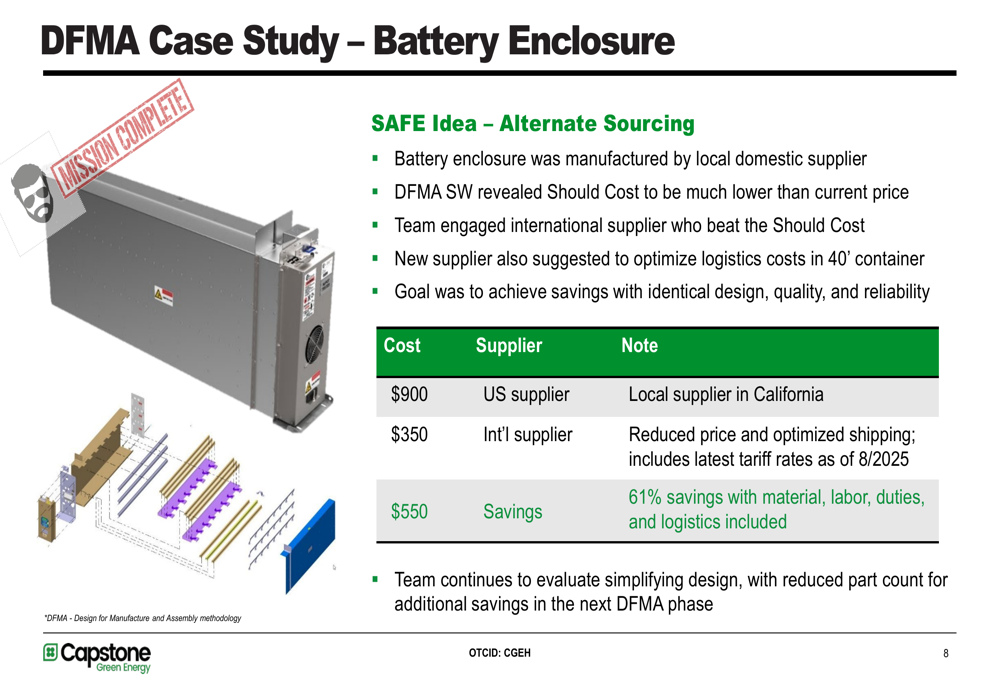
The company noted that 75% of its bill of materials are sourced in the United States, and that tariffs have actually strengthened its business continuity strategies and manufacturing capabilities.
Detailed Financial Analysis
Capstone’s financial results for Q1 FY26 showed improvements across multiple metrics when compared to Q1 FY25. Total revenue increased from $15.6 million to $27.9 million, while gross profit grew from $3.8 million to $7.6 million. The gross margin percentage improved from 24% to 27%.
The company’s net loss narrowed significantly from $(3.9) million to $(0.7) million, while adjusted EBITDA increased from $0.7 million to $2.7 million, as shown in the following financial results comparison:
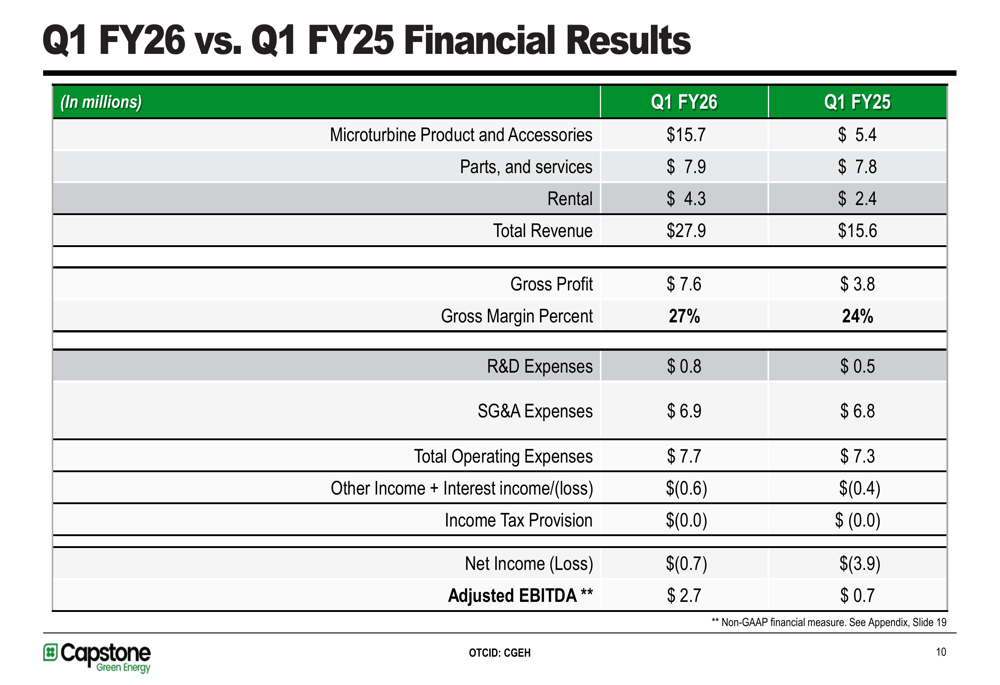
The balance sheet as of June 30, 2025, showed cash and cash equivalents of $6.6 million, down from $8.7 million on March 31, 2025. Accounts receivable increased from $7.0 million to $10.7 million, while total inventories decreased slightly from $20.1 million to $19.7 million. Accounts payable and accrued expenses increased from $15.5 million to $16.8 million.
Cash used in operating activities changed from $5.5 million to $(1.6) million, indicating an improvement in operational cash flow.
Forward-Looking Statements
Capstone’s technology portfolio positions the company to address multiple markets, including energy efficiency, oil and gas, microgrids, renewable energy, EV charging, and critical power supply:
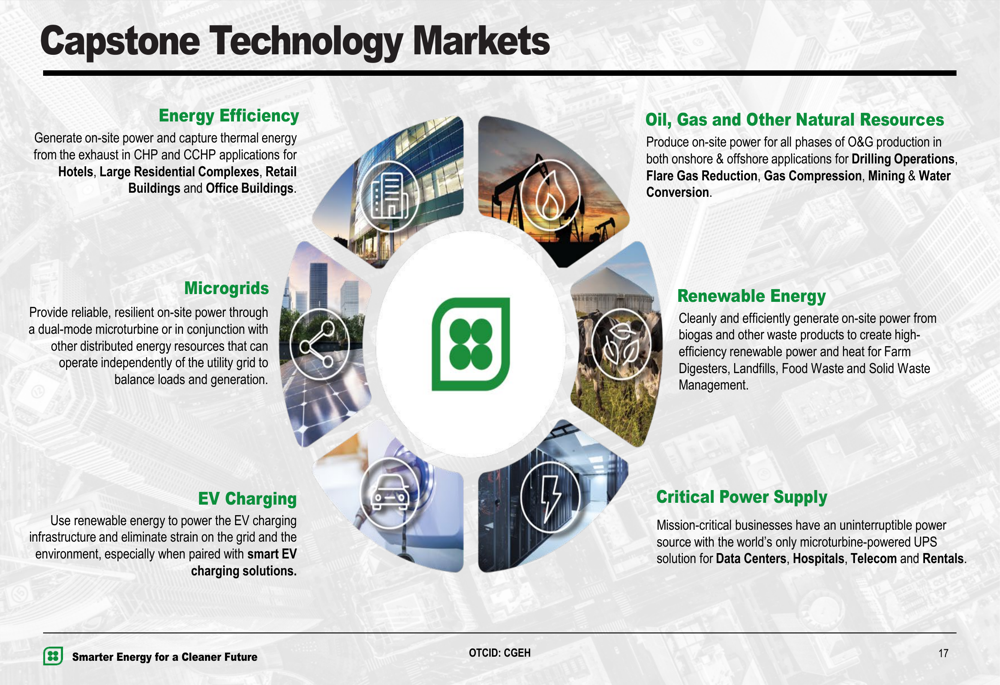
The company’s microturbine product suite features proprietary air bearing technology, high power density, and fuel flexibility (including natural gas, biogas, liquid fuels, and hydrogen blends), making it adaptable to various applications and markets:
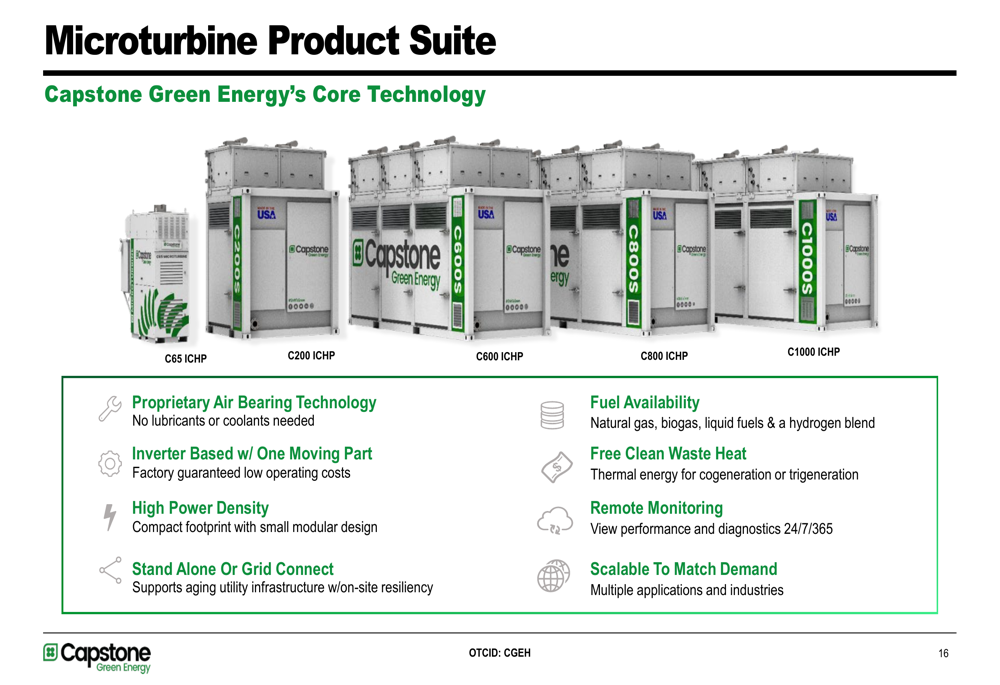
While Capstone’s presentation highlighted significant growth and strategic initiatives, investors should note that the company continues to operate at a net loss, albeit a substantially reduced one. The decrease in cash and cash equivalents also warrants monitoring in future quarters, particularly as the company integrates its Cal Microturbine acquisition and continues to invest in growth opportunities.
As Capstone expands its presence in distributed energy markets and builds on five consecutive quarters of positive adjusted EBITDA, the company appears positioned to benefit from increasing demand for clean energy solutions and microgrids across its target sectors.
Full presentation:
This article was generated with the support of AI and reviewed by an editor. For more information see our T&C.
